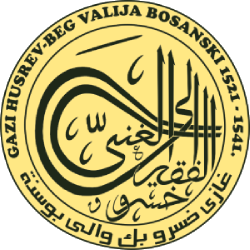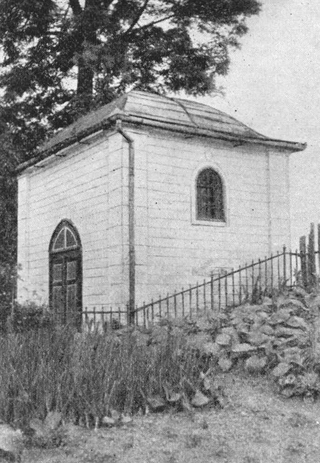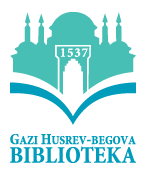
Sultanzade Gazi Husrev-beg was an Ottoman Bosnian sanjak-bey (governor) of the Sanjak of Bosnia in 1521–1525, 1526–1534, and 1536–1541. He was known for his successful conquests and campaigns to further Ottoman expansion into Croatia and Hungary. However, his most important legacy was major contribution to the improvement of the structural development of Sarajevo and its urban area. He ordered and financed construction of many important buildings there, and with his will bequeathed all his wealth into endowment for the construction and long-term support of religious and educational facilities and institutions, such as the Gazi Husrev-beg Mosque, and the Gazi Husrev-begova Medresa complex with a Gazi Husrev-beg Library, also known as Kuršumlija.

Gazi Husrev-beg Mosque is a mosque in the city of Sarajevo, Bosnia and Herzegovina. Built in the 16th century, it is the largest historical mosque in Bosnia and Herzegovina and one of the most representative Ottoman structures in the Balkans. Having been Sarajevo's central mosque since the days of its construction, today it also serves as the main congregational mosque of the Muslims in Bosnia and Herzegovina. It is located in the Baščaršija neighborhood in the Stari Grad municipality and, being one of the main architectural monuments in the town, is regularly visited by tourists.
Ghazi or Gazi, a title given to Muslim warriors or champions and used by several Ottoman Sultans, may refer to:

Türbe refers to a Muslim mausoleum, tomb or grave often in the Turkish-speaking areas and for the mausolea of Ottoman sultans, nobles and notables. A typical türbe is located in the grounds of a mosque or complex, often endowed by the deceased. However, some are more closely integrated into surrounding buildings.

Baščaršija is Sarajevo's old bazaar and the historical and cultural center of the city. Baščaršija was built in the 15th century when Isa-Beg Ishaković founded the city.

Dr. Safvet-beg Bašagić, also known as Mirza Safvet, was a Bosnian writer who is often described by Bosniak historians as the "father of Bosnian Renaissance", and one of the most renowned poets of Bosnia and Herzegovina at the turn of the 20th century. Bašagić co-founded the political journal Behar and was a founder of the cultural society and magazine Gajret, and was elected President of the Bosnian council in 1910. He is also well known for his oeuvre which exceeds seven hundred biographies he compiled over decades.

The University of Sarajevo is a public university located in Sarajevo, Bosnia and Herzegovina. It is the largest and oldest university in the country, tracing its initial origins to 1537 as an Islamic madrasa.

The Bosniak Institute is an institution of culture and scholarship in Sarajevo, Bosnia and Herzegovina. It has a museum and a gallery, a cultural centre and a library, a publishing house and a cultural centre. The institute is the result of its founder, Adil Zulfikarpašić, a donor (waqf), businessman, politician and promotor of cultural and educational life in Bosnia and Herzegovina. With his wife Tatjana Zulfikarpašić, he collected and preserved cultural heritage and contemporary production about Bosnia and Herzegovina, ranging from documents, photographs, postcards, maps, to books, encyclopaedias, journals, and other archival and library materials. The Bosniak Institute was founded in Zurich in 1988, and after the aggression against Bosnia and Herzegovina the entire stock was moved to Sarajevo, and opened in 2001.

Mehmed Handžić was a Bosnian Islamic scholar, theologian and politician. Handžić was the leader of the Islamic revivalist movement in Bosnia and the founder of the religious association El-Hidaje. He was one of the authors of the Resolution of Sarajevo Muslims and the chairman of the Committee of National Salvation.

Morića Han is a han originally built in 1551 in Sarajevo, Ottoman Empire. After a fire in 1697 it was reconstructed in its current form. Morića Han is one of the buildings which were financed by and belonged to Gazi Husrev-Beg's endowment (Vakuf). It is the only surviving han in Sarajevo. It is located in Baščaršija, Sarači street, in Stari Grad.
Murat Bey Tardić or Murat-beg Tardić was an Ottoman general.
The following is a timeline of the history of the city of Sarajevo, Bosnia and Herzegovina.
Feriz Beg was a 15th and 16th-century Ottoman military officer, Sanjak-bey of the Sanjak of Scutari and Sanjak of Bosnia.
Burhān ad-Dīn Ibrāhīm ibn Muḥammad ibn Ibrāhīm al-Ḥalabī was an Islamic jurist (faqīh) who was born around 1460 in Aleppo, and who died in 1549 in Istanbul. His reputation as one of the most brilliant legists of his time chiefly rests on his work entitled Multaqā al-Abḥur, which became the standard handbook of the Ḥanafī school of Islamic law in the Ottoman Empire.

Sheikh Mustafa Gaibi or Gaibija was a 17th-century dervish from Ottoman Bosnia whose mausoleum (turbe) at Stara Gradiška in Slavonia, in present-day Croatia, became a prominent site of ritual visitation by Muslims. He was regarded as a prophet by some Catholics. He wrote in Ottoman Turkish a discourse on the rules of the Jelveti Sufi order, to which he belonged. He also wrote letters in which he criticized various kinds of wrongdoing that he regarded as widespread in the Ottoman Empire. His letters contain mystical-looking expressions that are difficult to understand. He is reputed to have predicted the defeat of Ottomans at the Battle of Vienna in 1683 and the subsequent loss of their territories north of the river Sava. According to a local Catholic source, an Ottoman soldier killed Gaibi in Stara Gradiška, at the left bank of the Sava, after he refused to escape with other Muslims across the river before the advancing Habsburg army; they captured Stara Gradiška in 1688. In 1954, his turbe was transferred across the Sava, to the town of Gradiška in Bosnia and Herzegovina.
Divović is a South Slavic Surname mainly common amongst Bosniaks in Bosnia and Herzegovina.

JU Gazi Husrev-begova medresa, Sarajevo is a high school and college, a madrasa in Arabic, founded on 8 January 1537 CE and built in Sarajevo as Gazi Husrev-beg's second endowment. It was built in the style of the Istanbul madrasas, and was called Kuršumlija because it was covered with a lead roof.

Gazi Husrev-beg's Hanikah is a hanikah in Sarajevo. Tesavuf was studied in hanikah, and today it has an artistic purpose.
Hazim Šabanović was a Yugoslav historian, orientalist, and Ottomanist. He was Scientific advisor of the Oriental Institute in Sarajevo. He died in Istanbul, where he was searching for new data in libraries and archives for what would become a seminal work, the Literature of Bosnian Muslims in Oriental Languages, published posthumously in 1973. The mixed high school center in Visoko bears his name.

The Ottoman archives fund of the Gazi Husrev-bey library in Sarajevo is an archive fund as part of the public Gazi-Husrev-beg Library in Sarajevo, Bosnia and Herzegovina. The fund is founded in 1552 in a complex which houses Gazi Husrev-beg Medresa. It holds one of the most important collections of documents in Bosnia-Herzegovina. The collection survived through Bosnian war and Siege of Sarajevo. The archives also store a sizable number of newspapers and photographs.

















